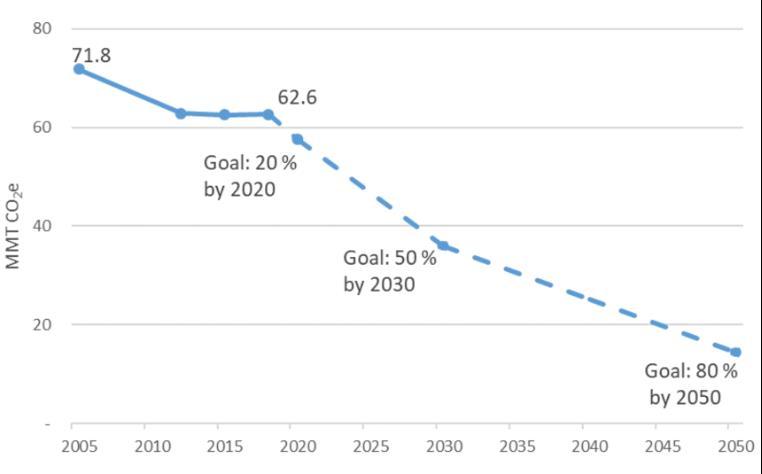Cutting Transportation Emissions by 2030 and Beyond
Recent Efforts, Challenges and Opportunities The adoption of the COG 2030 Climate and Energy Action Plan comes as the Greater Washington region addresses specific needs in housing, transportation, and recovery from the COVID-19 pandemic, and as local governments prepare their own climate action plans. These recent and ongoing efforts show where we can strengthen policies to make renewed and urgent progress in meeting our 2030 climate goal while also addressing equity and livability.
Visualize 2045
Regional Housing Targets
The 2018 Visualize 2045 plan would reduce transportation GHG by only 23 percent from 2005 to 2045 (at which point on-road GHG would begin to rise again due to continued VMT growth). This small reduction stands in contrast to our region’s adopted goal of reducing GHG 80 percent by 2050 and even more in contrast to stronger carbon neutrality goals adopted by localities and other regions and proposed by the Biden administration.
Currently, the region has a shortfall of 264,000 affordable housing units, 55 which is projected to grow. In September 2019, the region’s leaders adopted the following housing targets based on COG’s Future of Housing in Greater Washington report:
The National Capital Region Transportation Planning Board (TPB) is beginning the process of updating Visualize 2045, which will continue through 2021, with final adoption in 2022. The updated plan will need to demonstrate that it can achieve significant GHG emissions by 2030 and by 2045 under a range of scenarios that take into account uncertainty regarding factors such as the uptake of electric vehicles by the region’s households and workers.
1. Amount – At least 320,000 housing units should be added in the region between 2020 and 2030. This is an additional 75,000 units beyond the units already forecast for this period. 2. Accessibility – At least 75% of all new housing should be in Activity Centers or near high-capacity transit. 3. Affordability – At least 75% of new housing should be affordable to low- and middleincome households.56 Making sure that our region has enough affordable housing and that much of it is located near transit and within close-in activity centers is both an equity strategy and a climate strategy.
The TPB Board of elected and agency officials in December 2020 took a promising first step in the Visualize 2045 update by voting to require that project submissions “…prioritize investments on projects, programs, and policies to reduce greenhouse gas emissions, prioritize the aspirational strategies, and achieve COG’s land use and equity goals...”
18








